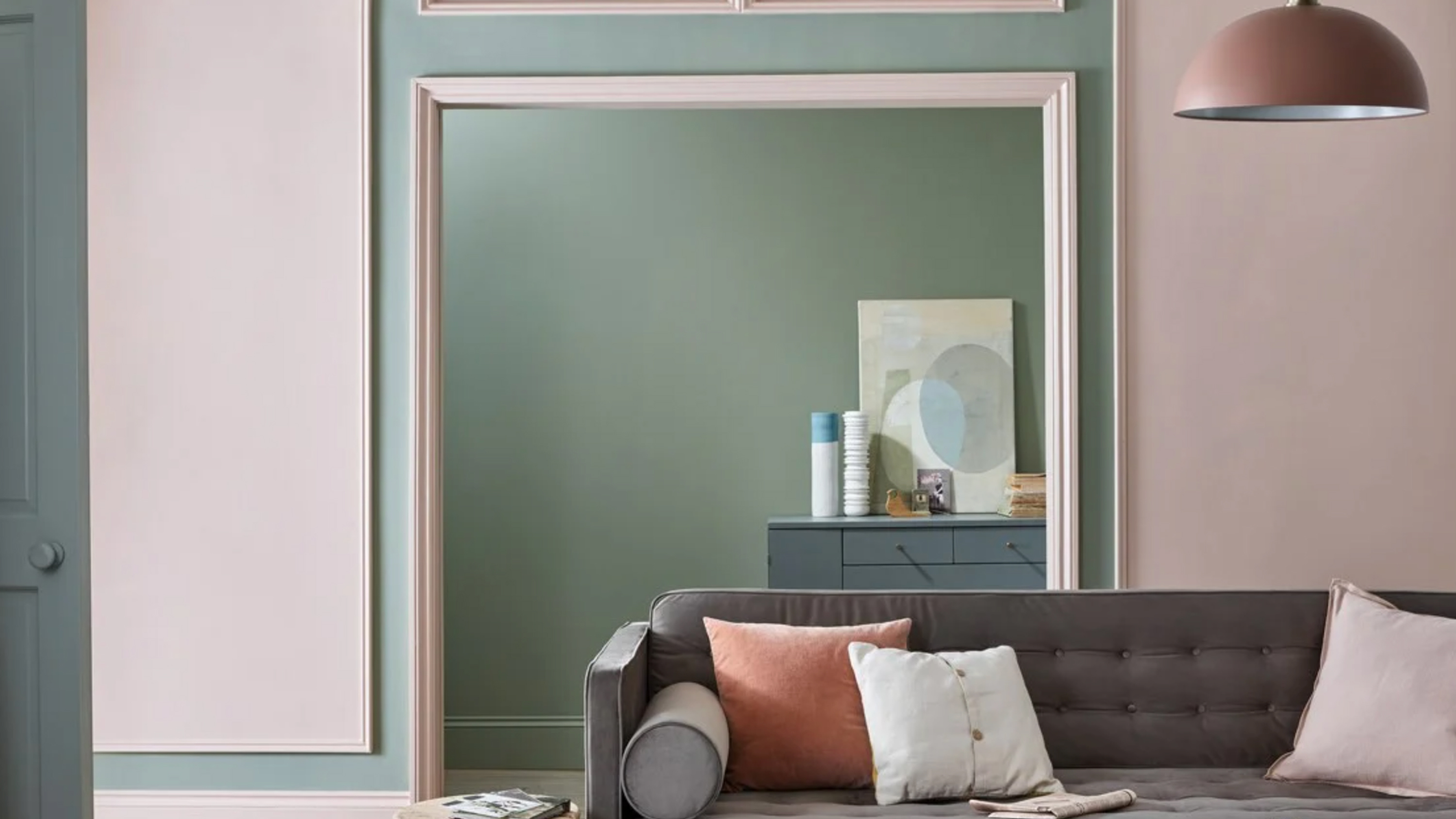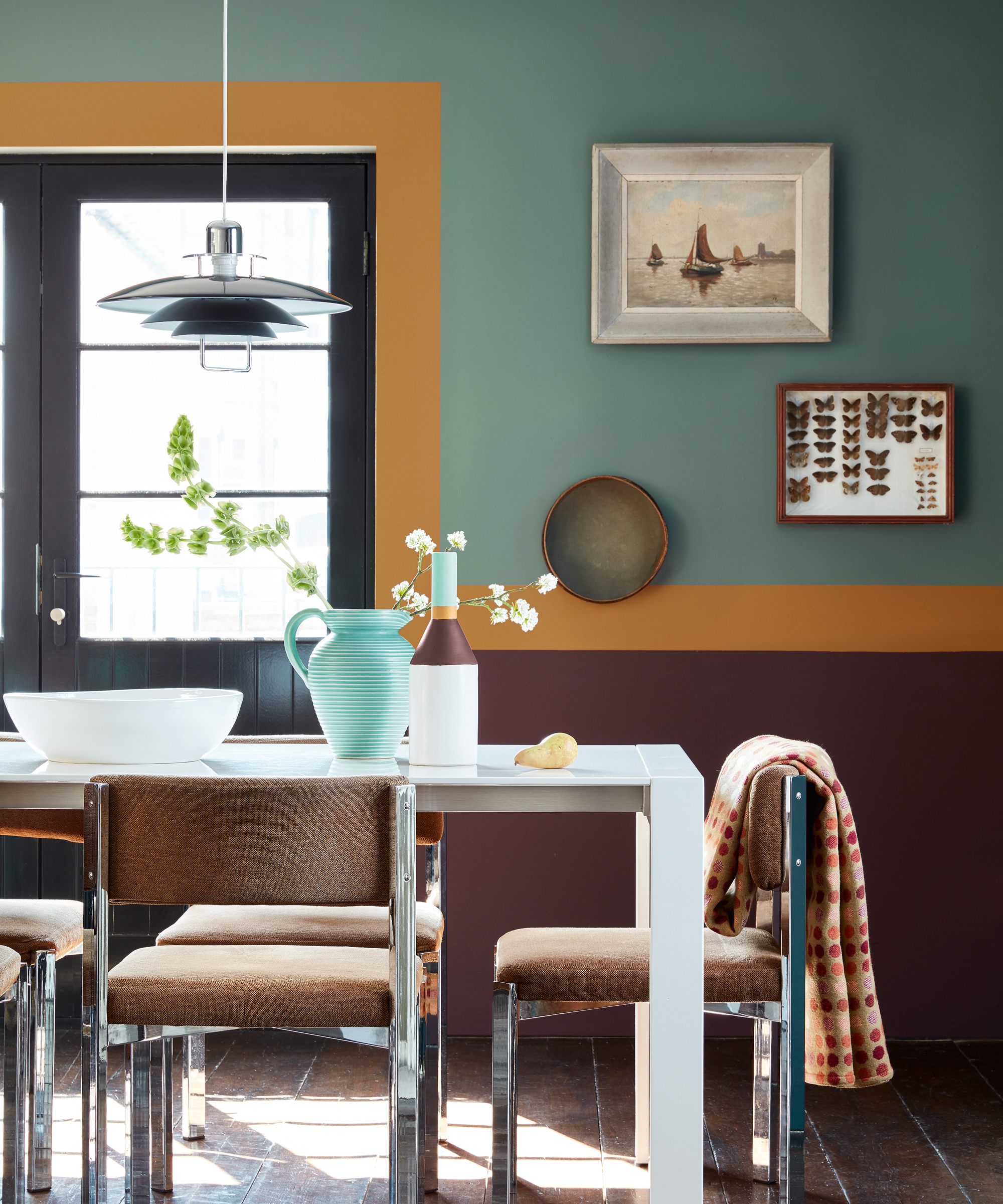Colour layering is the new paint trend everyone is talking about – paint experts give top tips for using it
The paint colour layering trend allows you to achieve an infinite variety of bespoke styles – here's where to get started


Paint layering is the new paint trend that's injecting interior design with fresh ideas ahead of the autumn-winter season. As far as painted wall ideas go, layering is more subtle and delicate than colour blocking – its main goal is to add depth and subtle colour play to a space, where traditional colour blocking is bold, big, and relies on strong contrast. We've asked paint colour experts to give their top tips on using paint layering. Here's what they said.
1. Enhance the depth of architectural features

Layering and architectural features such as arches, recesses, and mouldings were made for each other. Helen Shaw, UK Director of Benjamin Moore, thinks that accenting any architectural features you have is by far the most effective use of paint layering. 'Accent colours have multiple applications but are particularly useful for highlighting architectural features, zoning or simply adding life and movement to a room', she says.
The only thing that's required is carefully looking and thinking about what you want to highlight: 'Although this technique can be used in any room in the home it’s important to think about '‘the why and the how’'. The secret of success is twofold; choose the areas that you embellish wisely and thinking about what you want to accomplish and why, then pick the right palette and work out the best method of application.'
Katy Mclean, Head of Marketing at Crown Paints, observes that 'we’re seeing a rising trend for moulded and layered objects which create a sense of fluidity.' Movement, depth, and fluidity are the payoff of using paint layering – it makes a room more three-dimensional.
Ruth Mottershead, Creative Director at Little Greene, adds that colour layering can be used to create the illusion of architectural details even if they aren't there: 'In a contemporary space without architectural detailing, create the illusion of a dado or picture rail using bands of colour.'
2. Use complementary colours

Where colour blocking tends to rely on contrast, layering is more about mixing complementary colours. Ruth's top tip is to work with multiple colours of the same strength and undertone: 'For a calming and understated feel, opt for tonal hues such as those in the Colour Scales collection which offers families of graduated colour, giving the opportunity to combine a deeper shade with lighter shades of the same undertone.'
This doesn't mean you can't use brighter colours – just make sure you 'combine contrasting colours of equal strength.'
The Livingetc newsletters are your inside source for what’s shaping interiors now - and what’s next. Discover trend forecasts, smart style ideas, and curated shopping inspiration that brings design to life. Subscribe today and stay ahead of the curve.
Want to explore using paint colours? Start with out bedroom paint colour ideas.
3. Explore a more stylised, abstract look

On of the best aspects of colour layering is its versatility – it can be as soft or as bold as you like, depending on what you choose to accentuate and the colours you select. If you're feeling confident about your ability to use less obvious colour combinations, you can create a completely bespoke, contemporary look by emphasising different areas of a room with thinner layers or multiple bands of colours. Ruth's top tip: 'For a stylised look, take your bands of colour across fixtures and fittings such as doors, window frames or accessories such as hooks or picture frames.'
If you're going for complex layering, then you can combine contrasting and complementary colours – for example, two complementary and one contrasting hue – while still keeping the depth of colour uniform.
A kitchen or dining room is a good space to experiment with layering – take a look at some of the kitchen colour ideas in our gallery.
Layering is our favourite new way to make any decorating scheme instantly fresher and more contemporary.

Anna is a professional writer with many years' experience. She has special interests in architecture, photography, and high-end interior design. Her work has appeared in Homes & Gardens, Gardeningetc, and many other publications.